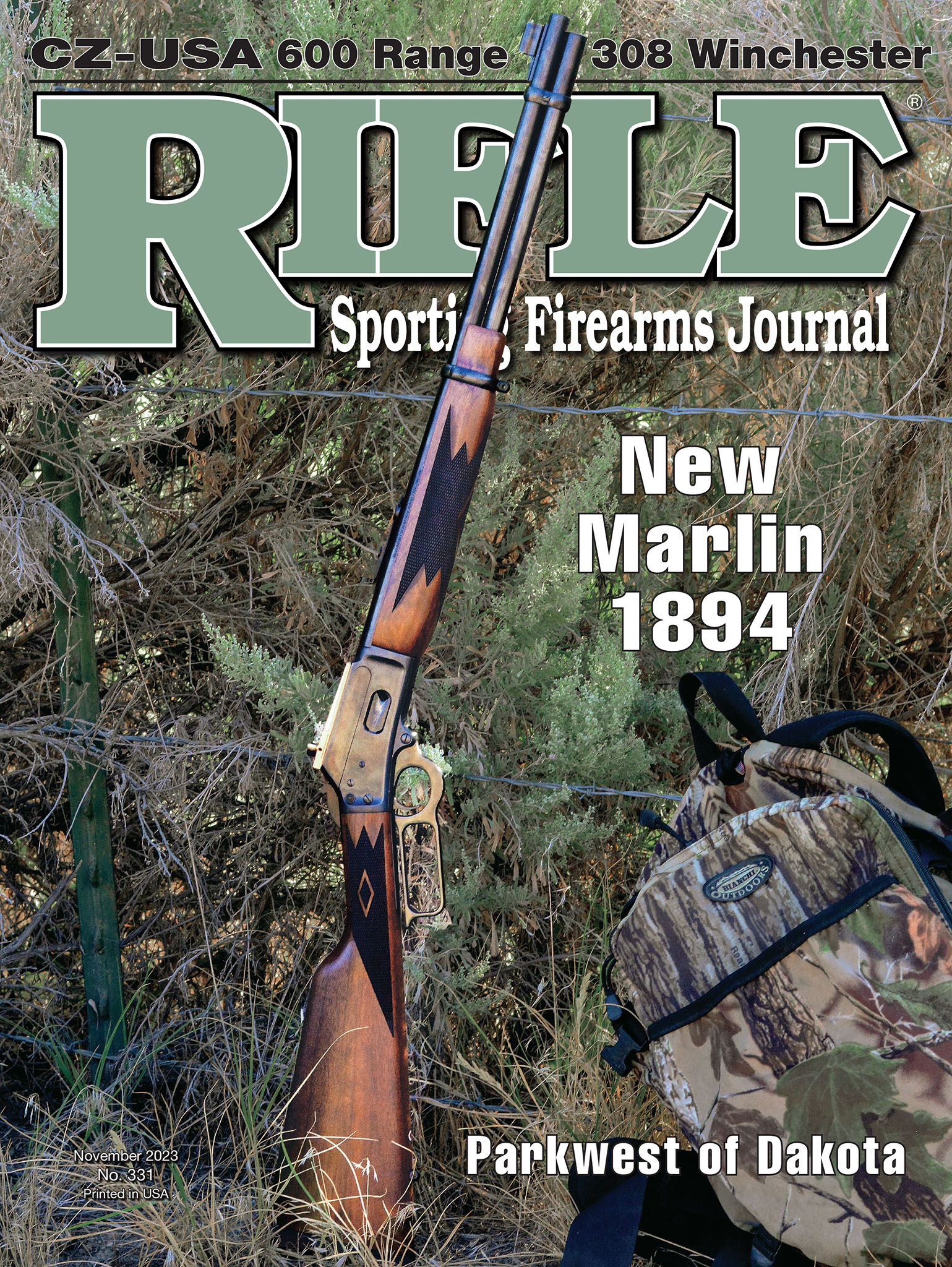Down Range
Winchester M1894 38-55
column By: Mike Venturino - Photos by Yvonne Venturino | November, 23
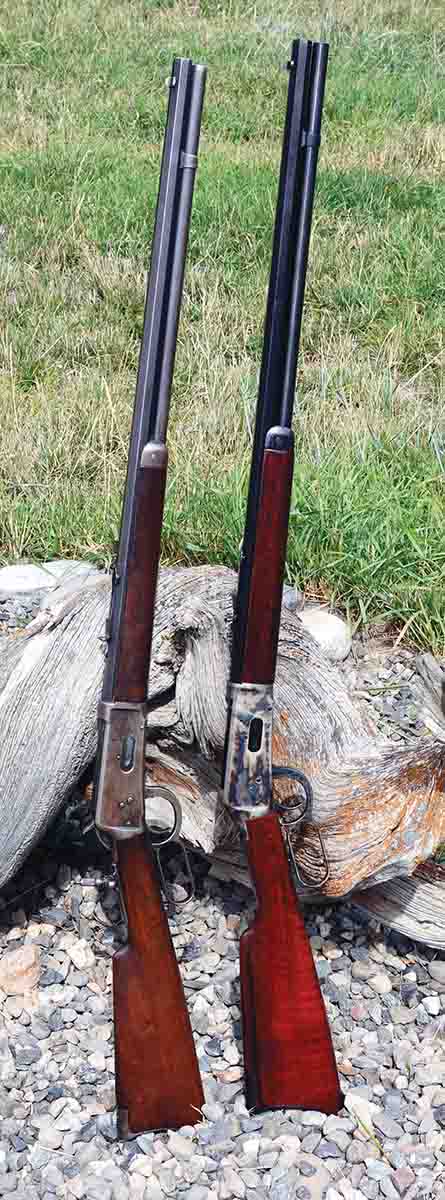
My first vintage Winchester levergun, bought in 1984, was a Model 1894 38-55 octagonal-barreled rifle made in 1897. What an educational experience that rifle was! Although in fine overall condition, there were some odd lines on one side of the receiver and in the bore. When shown to an extremely knowledgeable Gunsmith friend, Ed Webber, said: “Don’t worry, they are simply forging flaws in the steel and quite common on old Winchesters.” That was my first learning experience with vintage Winchesters. That fine fellow also gifted me a Marble tang peep sight and mounted it while I was there. He passed away in 2022 and is missed.
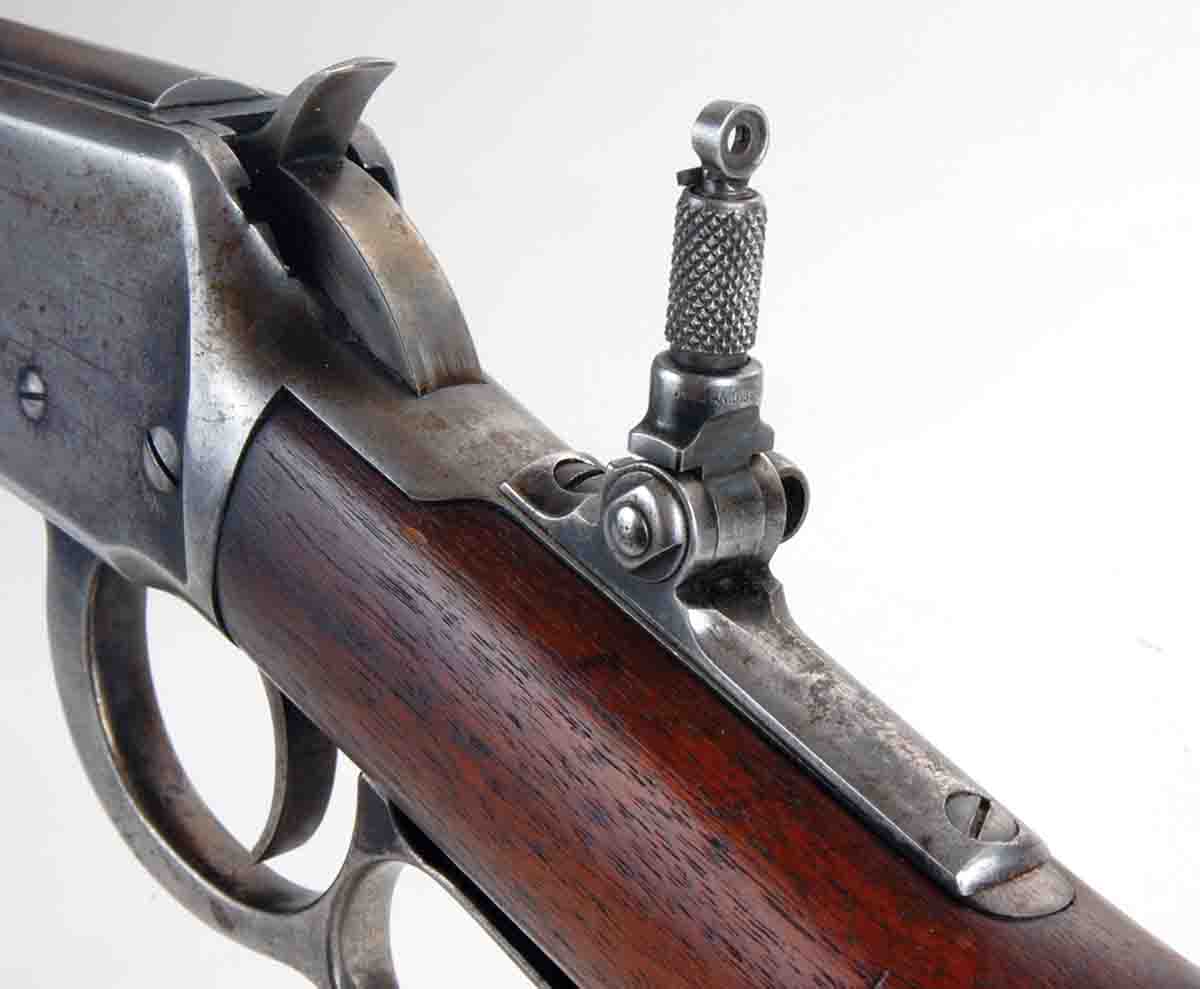
The next bit of education was huge. After obtaining reloading dies, some .375 inch, 255-grain jacketed softnose bullets were loaded using IMR-3031 with a charge recommended by Lyman. For all I know, those bullets are still going for none of them ever touched my 4x4 foot square target frame. Next, Barnes .377-inch bullets were obtained. They shot reasonably well. Being a cast bullet shooter at heart, I knew using a steady diet of jacketed bullets would never suffice. Later, the fact was learned that jacketed bullets should never be fed constantly to that particular 38-55. The reason will be covered momentarily.
For a cast bullet, Lyman mould No. 375449 was ordered along with the proper top punch and .377-inch lube/sizing die. This bullet is cataloged as weighing 264 grains, was flatnose and cut for gas checks. This became educational point number three. The first bullets from that mould using wheel-weight alloy, plus a spot of tin, dropped at .377 inch. They were barely touched in their passage into the sizing die. Here we have a conundrum. Again, using IMR-3031 some of those cast bullets hit my target frame but passed through it sideways.
That drove me to finally slugging the Winchester’s barrel. It measured .379 inch. No wonder my cast bullets were tumbling! About that time, another Model 1894 38-55 came my way – a saddle ring carbine. When fired with the Barnes 255-grain JSP with IMR-3031, handloaded bullets did not tumble. Its barrel also slugged at .379 inch. As I learned later, all vintage Winchester 38s (except 38 WCF/38-40) had nominal .379-inch groove diameters as a matter of course.
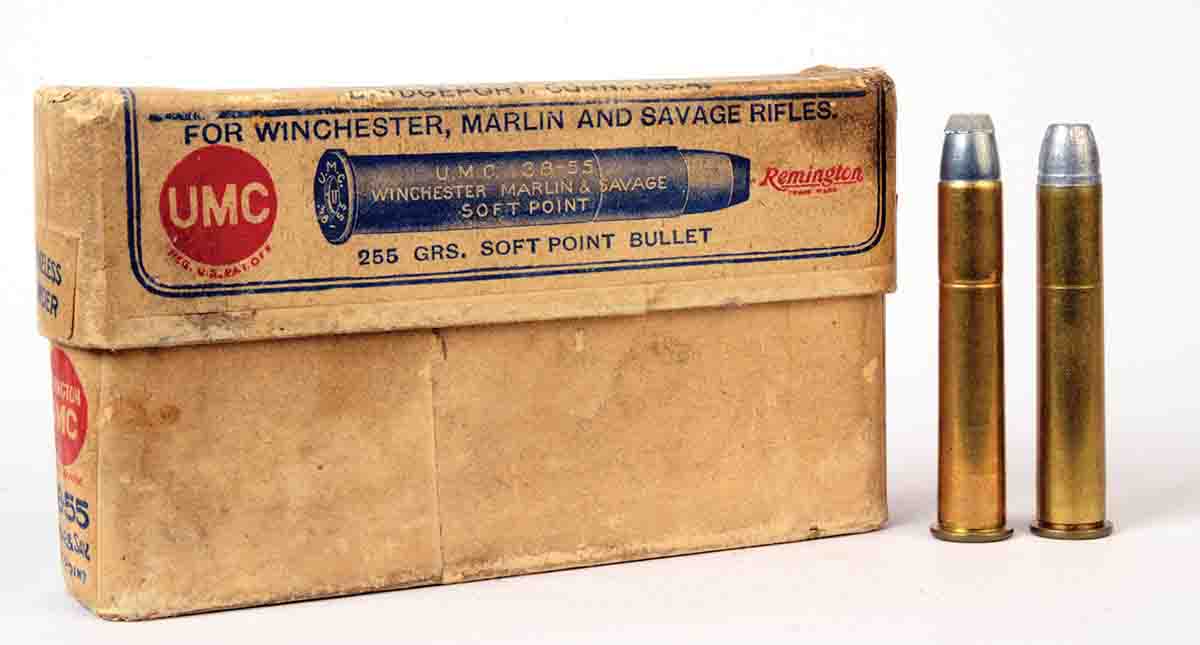
Upon consulting the RCBS cast bullet chart, there appeared a mould labeled “38-255FN.” That one nominally was for a gas checked, flatnose weighing 255 grains. Also purchased was a .379-inch lube/sizing die. Using Lyman No. 2 alloy, they weighed 270 grains. Better yet, they dropped from the mould at .381 inch. Best of all, they began to group in the 2- to 2½-inch range from sandbag rest at 100 yards. Figuring that if .379-inch bullets were good, .380-inch bullets had to be better. They shot equal to the .379-inch bullets, but there was some slight resistance in chambering, so .379 inch became my standard 38-55 diameter. By the way, these last cast handloads shot well in the carbine but groups were about an inch or so larger on the average. End of education.
Now for some history.
The fabulously popular 30 WCF/30-30 has become synonymous with Winchester’s Model 1894. The fact
is that lead-bulleted/black-powder- powered 32-40 and 38-55 calibers were its introductory chamberings. The reason for that was that the special nickel steel needed for jacketed bullets and smokeless powder barrels had not been perfected by that time. In 1895, those problems had been solved and 25-35 WCF along with the 30-30 WCF were added. In 1902, the 32 Winchester Special came along. By 1899, Winchester’s catalog listed 38-55 factory loads in both smokeless and black-powder versions with the former having 255-grain jacketed bullets and the latter having 255-grain lead bullets of 1:40 tin-to lead alloy over 48 grains of black powder. By the way, Winchester’s rifling twist for 38-55s was one turn in 40 inches.
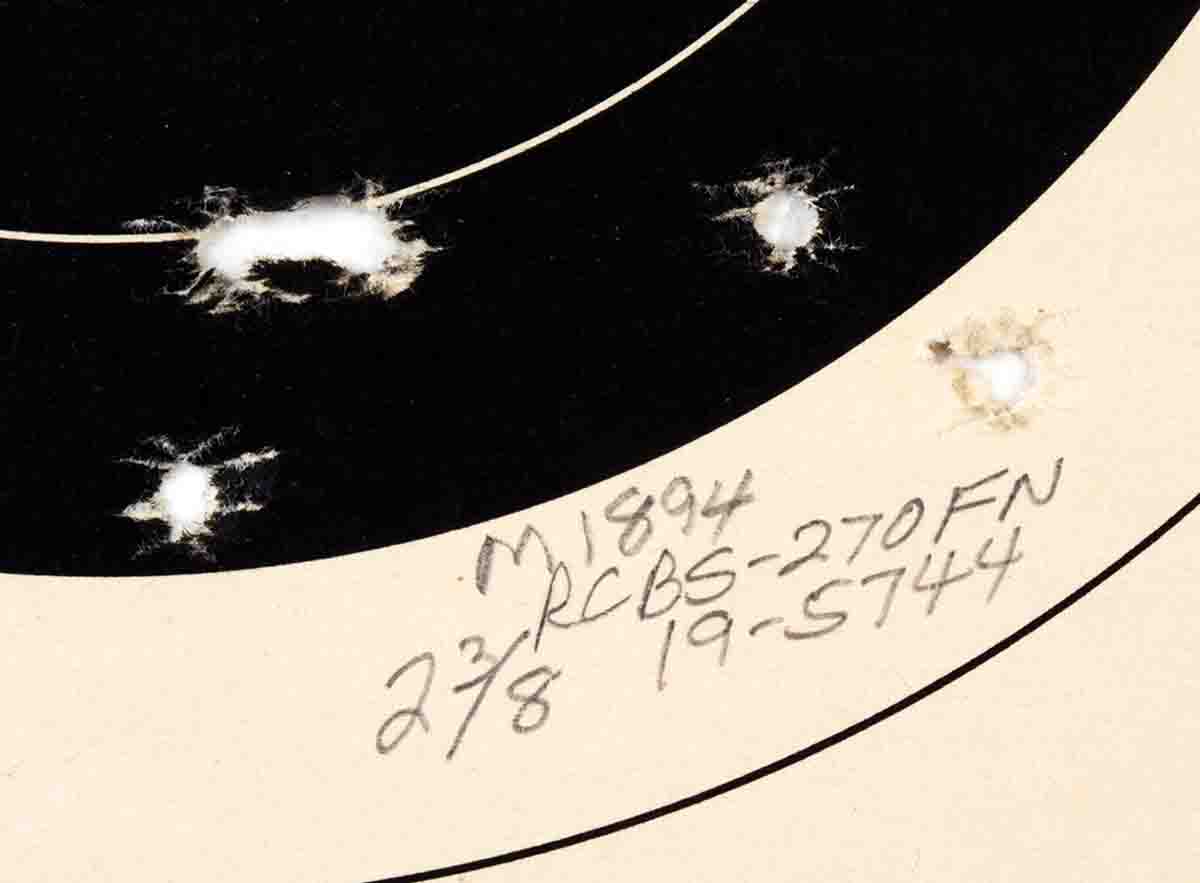
Once Accurate 5744 came on the market, I found nothing better to load 38-55 with cast bullets. What I settled upon with the 270-grain RCBS bullet was 19 grains for a velocity of about 1,340 feet per second (fps). With jacketed bullets, I stuck with IMR-3031. A 34-grain charge adds about 300 fps velocity over the cast bullet load. When doing the shooting for my book, Shooting Lever Guns of the Old West, black powder was used in the Winchester 38-55 for the first time. (By that time, I’d let someone talk me out of the carbine.) To my surprise, 40 grains of FFg black powder gave groups as small as 1½ inches at 100 yards, but only at about 1,150 fps. Winchester 255-grain JSP factory loads were only going 1,132 fps
My 38-55 Winchester rifle only went hunting with me twice; both times using the Barnes 255-grain JSP. One hunt was for a pronghorn doe, which I hit at about 50 yards. No great story there. The second hunt was for mule deer. Yvonne and I were walking on a sagebrush flat with about 6 to 8 inches of snow on the ground. We had seen a decent buck there the day previously but didn’t get a shot. Early the next morning, we were back. The buck stood up suddenly at about 75 yards and started to run. I unintentionally violated my self-imposed rule of never shooting at a running animal.
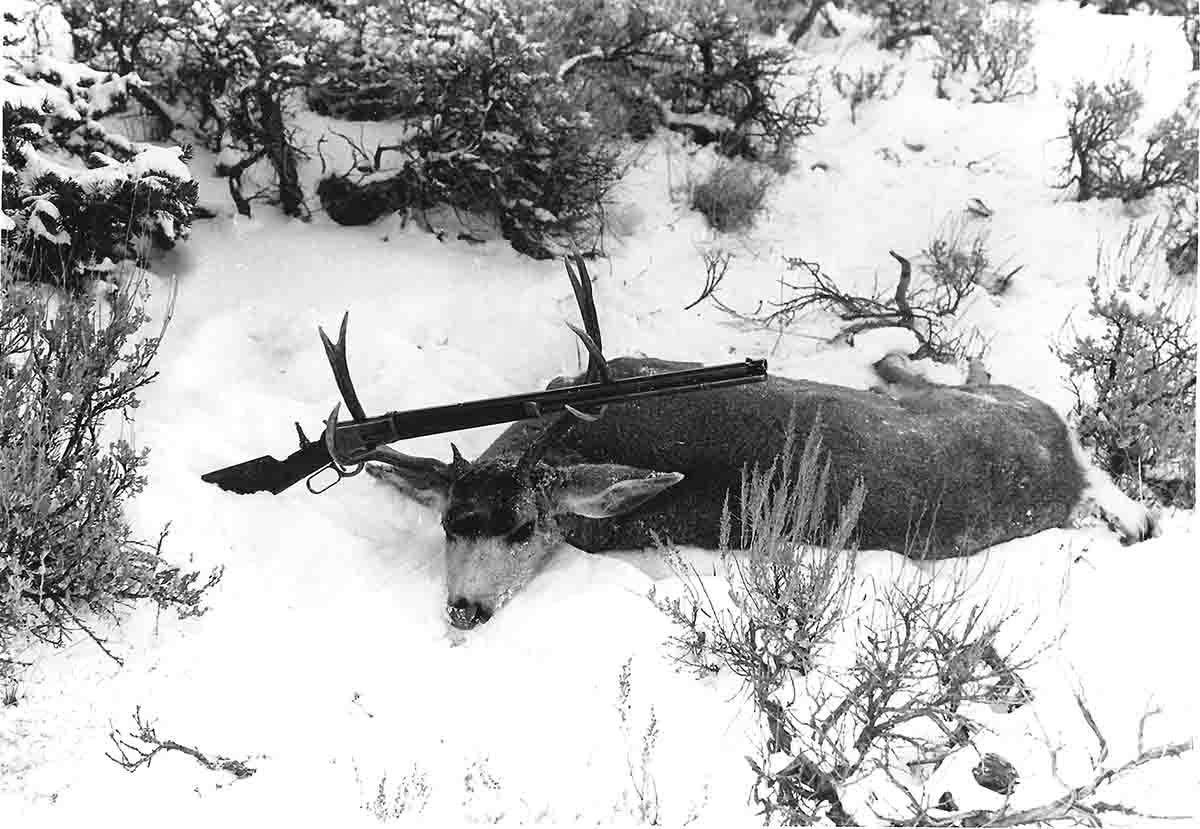
As the buck started, it seemed that of its own violation the Winchester came to my shoulder and its 26-inch barrel tracked the deer steadily. When the trigger was pulled the deer went out of sight. That snow-covered area was a mass of deer tracks so we couldn’t sort the buck’s from others. There was nary a drop of blood on the snow. Just before we were ready to give up, I spotted him quite dead behind some sagebrush. Again, there wasn’t a drop of blood about. The shot was perfect in the deer’s heart/lung area so after dressing him I looked at the off side. Sure enough, under the skin was a lump and when slit the mushroomed Barnes JSP bullet popped out.
Here’s an interesting conclusion. When buying the Winchester 38-55 in 1984, it was the first time I met the seller, Kirk Stovall. He is now among my best friends. I’ve borrowed several of his rifles for articles in these pages.


